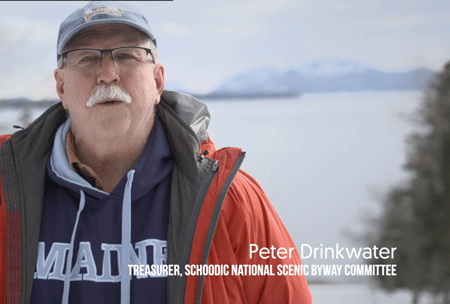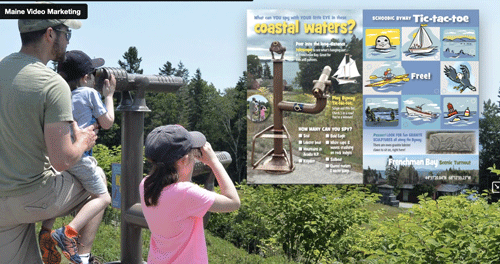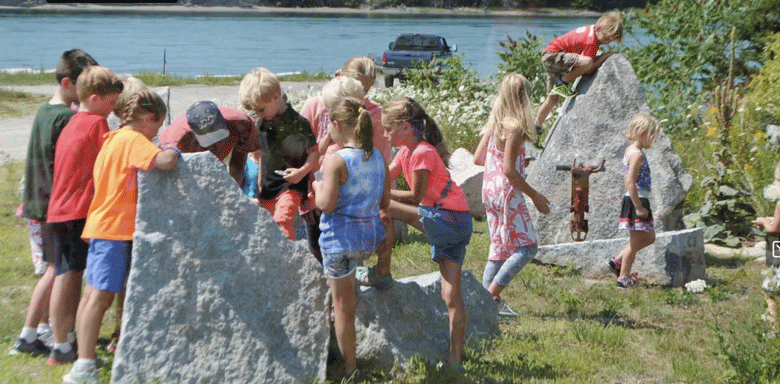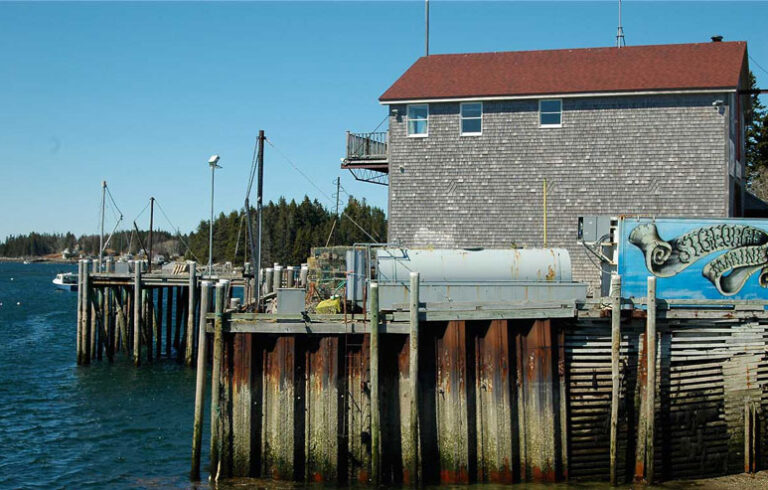The Schoodic National Scenic Byway was established as a way of reviving a region reeling from a base closure. More than 25 years later, some local folks have broadened the appeal of the 29-mile long road, making it kid- and family-friendly.
The Kids Quest installations along the road earned the local group the Innovation & Creativity Award at the Governor’s Tourism Conference. Gov. Janet Mills presented the award at the March 28 event in Bangor.
Committee members who helped land the national scenic byway designation began collaborating in 1997, mindful of the void left by the departure of the U.S. Navy base from Winter Harbor. In 2000, the Schoodic National Byway was established to help prevent the town from “drying up” by attracting visitors, explains Peter Drinkwater, an original committee member who owns the 5 & 10 store in Winter Harbor.

The byway winds through Hancock, Sullivan, Gouldsboro, Winter Harbor, and Prospect Harbor, and includes a section in Acadia National Park on the Schoodic Peninsula. Its culture and history are as rich as it is diverse, with industrial ties to the railroad, granite quarries, logging, canneries, and the working waterfront, including lobster, clams, worms, and seaweed.
“It’s all really condensed in 29 miles. It’s very interesting,” said Barbara Shanahan, a committee chairwoman, who has also been involved in the committee since its origin.
“We’re also part of Acadia National Park,” she said. “That makes us very unique.”
Community partners and committee members have worked to develop scenic stops with interpretive signage along the byway, relying on fundraising from state and federal grants. The goal has been to improve the community, enhance the experiences of locals and visitors, and boost economic development.
“Everybody has their thing, and they’ve all joined us,” said Shanahan, who runs an antique business alongside her daughter’s ice cream shop in Sullivan. “One of our goals is to enhance tourism because that boosts the economy in everybody’s town. The local fishermen, the wormers, the clammers, the artisans, the ice cream, the antiques—they all benefit.”
In 2012, after the byway was established, the committee began to think about what should come next.
“Our group was like, ‘What can we do more?’ We kept adding to it,” said Larry Johannesman, landscape architect at the Maine Department of Transportation who has been on the committee since 2005. “How can we fill this whole idea out? How can we make it cohesive and fun too?”

With that in mind, the committee aimed to increase youth engagement at the interpretive sites along the byway. Initial support for the endeavor came in many forms, from grant funding to spaghetti dinner proceeds to contributions from the towns along the byway.
Over time, the vision manifested as Kids Quest, designed to engage children and their parents in the region’s history, ecology, and culture at seven outdoor locations along the byway, with emphasis on the working waterfront.
Kids Quest creates opportunities for experiential education with interactive exhibits at each of the seven sites, featuring:
• gravity in relation to the reversing falls at Tidal Falls in Hancock
• trains and railroads at Waukeag Station in Hancock
• a granite quarry with tools and a scavenger hunt at Gordon’s Wharf in Sullivan
• a handicap-accessible telescope with a wildlife tic-tac-toe activity at the Frenchman Bay scenic turnout
• a shellfish and worm identification game in the mud flats at Long Cove rest area
• a seaweed activity at Sand Cove in Winter Harbor
• a mini lobster boat and mini lighthouse and lobster-themed games in Prospect Harbor.
“The whole effort features the idea of the working waterfront,” said Johannesman. “We’re interpreting that to show kids and visitors lobster fishing, clamming, worming, and seaweed. It’s really tied to the type of work that they do in the community.”
The Kids Quest pamphlet features interactive games and activities that accompany the educational exhibits at each of the sites along the byway and is also available online. The pamphlet was first introduced during a celebration at a local festival in 2022 and can be found in local businesses and at town offices in the area.
“The idea is to promote business and economic development with the flavor of the Schoodic area,” said Johannesman. “It’s marketing the byway and supporting local businesses while having fun—it’s the trifecta.”
The committee is hoping to create another layer of engagement by developing Kids Quest-inspired lawn games at local businesses with outdoor space to cultivate dimensions of participation within the community while reaching new audiences.
“One of the beauties of the Schoodic community is that there are so many wonderful little nooks and crannies with beautiful people and beautiful businesses in them,” said Johannesman. “This knits all of those things together. Every community has hidden gems.”
For more information, visit schoodicbyway.org.





